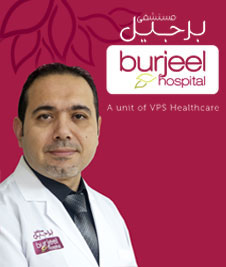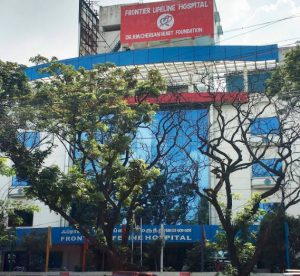Cone Beam Guided Implant Restoration
Cone beam CT guided implant restoration is a new technology that allows oral surgeons to build a three-dimensional model of your jaw and teeth to enable them to plan a complex dental restoration before proceeding with the actual procedure. Cone-beam computed tomography helps in placing proper dental restoration by using 3-dimensional imaging for multiple dental […] Read More
Top Doctors For Cone Beam Guided Implant Restoration Treatments
Top Hospitals For Cone Beam Guided Implant Restoration Treatments
Cone Beam Guided Implant Restoration
Cone beam CT guided implant restoration is a new technology that allows oral surgeons to build a three-dimensional model of your jaw and teeth to enable them to plan a complex dental restoration before proceeding with the actual procedure. Cone-beam computed tomography helps in placing proper dental restoration by using 3-dimensional imaging for multiple dental implants, works well for both upper and lower teeth.
With the help of cone beam guided implant restoration, surgeons get an idea of exact surgery prior to the main surgery as a result, patients feel less pain and discomfort during th surgery
Reasons For Cone Beam CT Guided Implant
Two-dimensional (2D) imaging techniques are unable to depict complicated three-dimensional (3D) anatomical structures and related pathologies associated with dental and maxillofacial diagnostics, therefore, this technique is more efficient.
Furthermore, the 3D database allows surgical planning and transfer to surgery through 3D printing and navigation. CBCT also offers a high therapeutic potential related to surgical guide and further prosthetic rehabilitation, and it delivers more radiation than the conventional dental X-ray examinations.
Symptoms
Types of CBCT
There are various types of CBCT machines, but some of the most used are:
- Next Generation i-CAT
- Scanora 3D
- New Tom 3G
- AccuiTomo MTC-1
- Galileons 3D
Each of the above-mentioned has differences in detector type and characteristics, scan field of view (FOV) selection, and voxel size (which influences contrast and resolution), as well as system-specific image artifacts
Causes
The Pros Of Cone Beam Computed Tomography
- The doctor understands important dental anatomy in advance so chances of complications decrease.
- Earlier, surgeons used to combine cone-beam computed tomography with X rays only but now they are also connecting it with CT scan.
- Surgeons can easily measure the width, height, and accurate alignment.
- Also, the structure of the bone also becomes visible clearly with the CT scan in CBCT.
- If a patient has tumours, cysts, and infection then surgeons can know about it easily in advance.
- Also, surgeons won’t get confused about horizontal and vertical augmentation.
- Small cone-beam computed tomography for dental restorations is very advantageous than a bigger one because patients don’t face more radiation for a longer time in smaller ones and also smaller CBCT can be operated and customized easily.
- Much better than fan-based CBCT, in terms of quality and speed.
- Smaller CBCT is less costly.
- It helps to check the temporomandibular joint-related disease.
Drawbacks Of Cone Beam Computed Tomography
- CBCT doesn’t help to get a precise picture of deep soft tissues and muscles.
- Objects mostly made up of metal and disturb during tests and diagnosis.
Who Is Eligible For CBCT Procedure?
There are few absolute contraindications to dental implant placement. Relative ones include:
- Cognitive decline
- Medical conditions that may jeopardize the life or lifespan of the patient.
The ideal candidate for a dental implant includes:
- One with good general and oral health.
- One with adequate bones in the jaw needed to support the implant
- One with healthy gum tissues that are free of periodontal disease.
CBCT Procedure
After consulting with your dentist and there is a need for a dental implant, a CBCT can be used to assess the area through the following steps:
- A cone-shaped X-ray beam is inserted into your mouth and rotated around to capture the 3D data of the area.
- These data are used to reconstruct a 3-dimensional (3D) image of the following patient's anatomy:
- Dental region
- Oral maxillofacial region (mouth, jaw, neck)
- ENT (ears, nose, and throat)
The Pros Of Cone Beam Computed Tomography
- The doctor understands important dental anatomy in advance so chances of complications decrease.
- Earlier, surgeons used to combine cone-beam computed tomography with X rays only but now they are also connecting it with CT scan.
- Surgeons can easily measure the width, height, and accurate alignment.
- Also, the structure of the bone also becomes visible clearly with the CT scan in CBCT.
- If a patient has tumours, cysts, and infection then surgeons can know about it easily in advance.
- Also, surgeons won’t get confused about horizontal and vertical augmentation.
- Small cone-beam computed tomography for dental restorations is very advantageous than a bigger one because patients don’t face more radiation for a longer time in smaller ones and also smaller CBCT can be operated and customized easily.
- Much better than fan-based CBCT, in terms of quality and speed.
- Smaller CBCT is less costly.
- It helps to check the temporomandibular joint-related disease.
Drawbacks Of Cone Beam Computed Tomography
- CBCT doesn’t help to get a precise picture of deep soft tissues and muscles.
- Objects mostly made up of metal and disturb during tests and diagnoses.
Uses of CBCT
Cone Beam CT Guided procedure is used by radiologists and dental professionals for various clinical uses including:
- Dental implant planning
- Visualization of abnormal teeth
- Evaluation of the jaws and face
- Cleft private assessment
- Diagnosis of dental cavities
- Diagnosis of endodontic (root canal)
- Diagnosis of dental trauma
CBCT System Risk
High radiation dose emanating from the system has a serious cancer risk on patients, unlike conventional CT systems.
Dental Implant Recovery Time
Dental implants are a permanent way of replacing teeth. The treatment requires time to heal. The following facts are worth to note:
- Most patients go back to work the next day.
- Over-the-counter medications usually adequately ease pains.
- The average healing time for dental implants is 4 to 6 months.
FAQ
- How long does CBCT take?
Preparation takes a few minutes, but each scan takes less than 1 minute to perform. You may need more than one scan depending on your medical challenge. Put together, the whole procedure may take about 30 minutes or less.
- How much does a CBCT scan cost?
The CBCT scan varies in cost depending on the provider, type of machine, and what settings are used. Several scans may also contribute. The cost of a CBCT scan in the US is between $100 to $500..
- What type of findings can be visualized in a CBCT image?
CBCT allows the visualization of different pathological conditions such as photogenic and non-odontogenic cysts, benign or malignant neoplasias (abnormal tissue growth), fibro-osseous diseases, developmental abnormalities, etc.
- Is there anything I need to do before I come for my appointment?
Preparing for a CBCT scan appointment requires nothing special, in order than making sure that all your facial wares/jewelry (eyeglasses, nose rings, earrings, chain around your neck) are removed before the scanning procedure. This may be done at home before coming or at the venue before the scan. You are also expected to remove all removable dentures before the scan is effected.
- What is the difference between OPG and CBCT?
In a comparative dimensional study between panoramic X-ray, OPG, and CBCT, CBCT measures the length of anterior teeth was higher than that measured on OPG (orthopantomogram) in the majority of cases. Molar width (mesiodistal distance) parameter variation was very small between OPG and CBCT.
- What’s The Cost Of Cone Beam Ct Scan?
Surgeon/dentist usually charges on the basis of the equipment or machine they are using if they are using expensive or big CBCT then cost ranges from $400-$500 else it can be $100-$300.
- What’s The Amount Of Radiation In Cone Beam Ct Scan?
For smaller ones – It is between 20-80 microsievert
For larger ones – It is between 80-200 microsievert
- What Is The Appearance Of Cone Beam Computed Tomography?
It is square-shaped and resembles a cone. Patients typically lie down on a table or on a dental engine chair so that CBCT can move at a 360-degree angle to take a closer look at your teeth and automatically clicks the picture of your teeth. Mostly C arm or rotating gantry based tables or chairs are used.
- What’s The Duration Of Cbct Ct Scan For Teeth?
It takes 30-45 minutes to depend upon how deeply the problem is rooted.
What Happens During The Cbct Procedure?
With C-arm or gantry, x-ray detectors are arranged simultaneously. The detector makes 2D pictures initially with 150-300 resolution and then the dentist and surgeon convert it into a 3D picture. Dental experts might find it tricky to perform this test on children as this requires no movements and without activity.
Is It Ok To Repeat CT Scan?
More radiation exposure is harmful but if it is very necessary for accurate results and to confirm the former test one extra won’t damage much but for children with the age 18 or below one time is more than enough.
In Which Situations Cbct Is Very Effective?
- When the need for 5-6 or more implants arises this becomes the best fit.
- When the restoration is tricky and challenging.
- People who aren’t happy with the size or shape of the bone.
- To know in detail about neighbouring teeth.




























































































